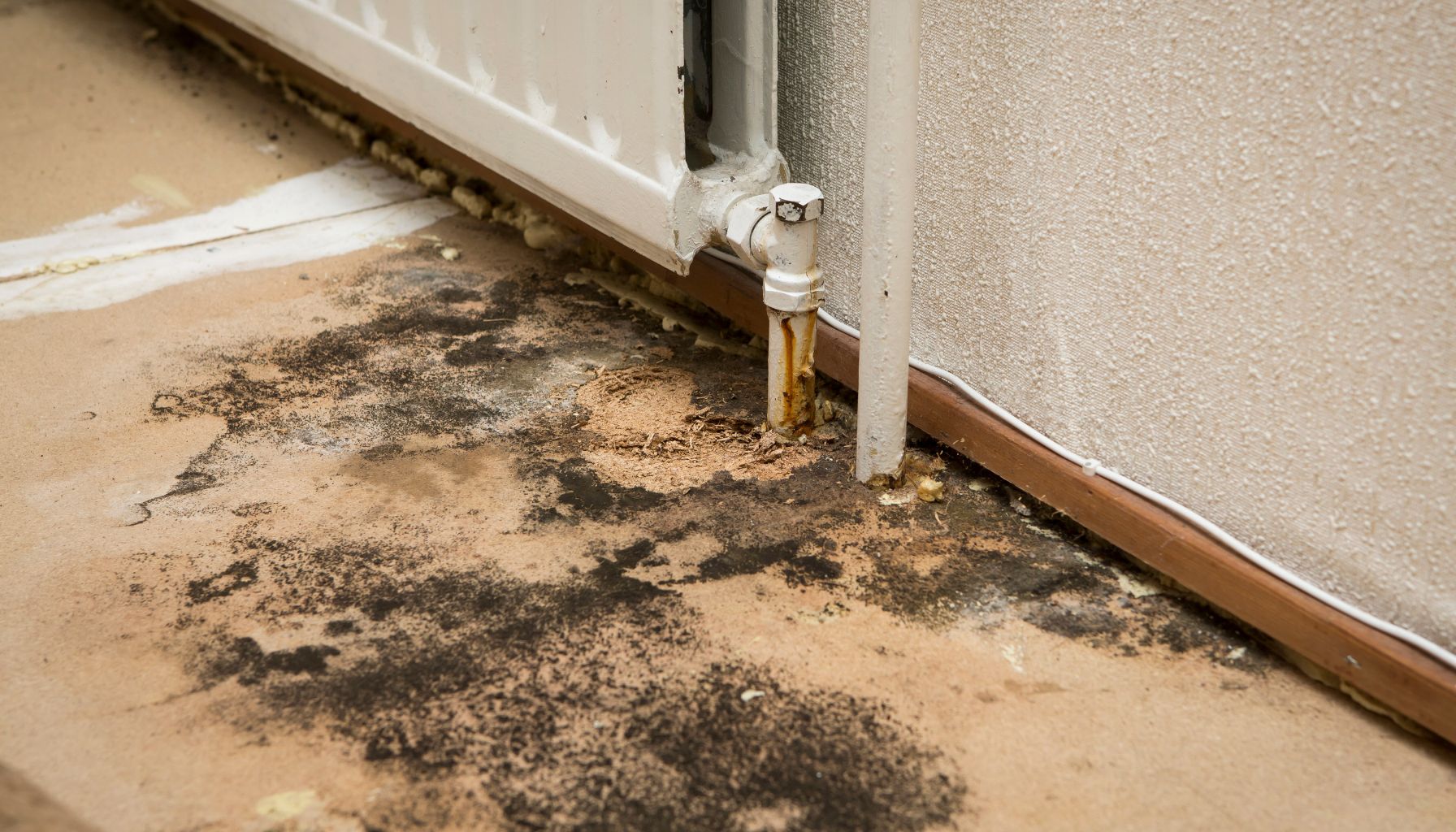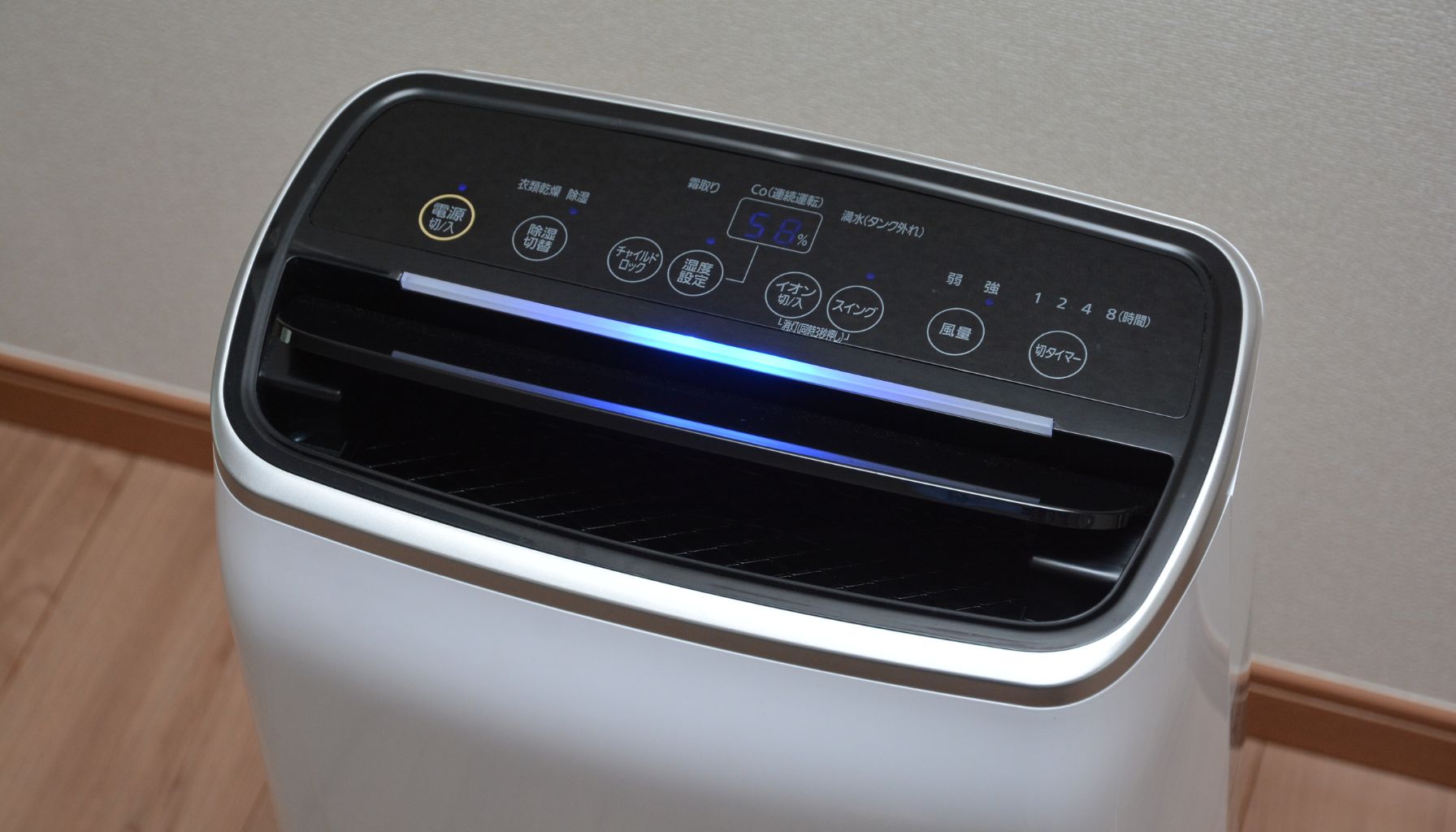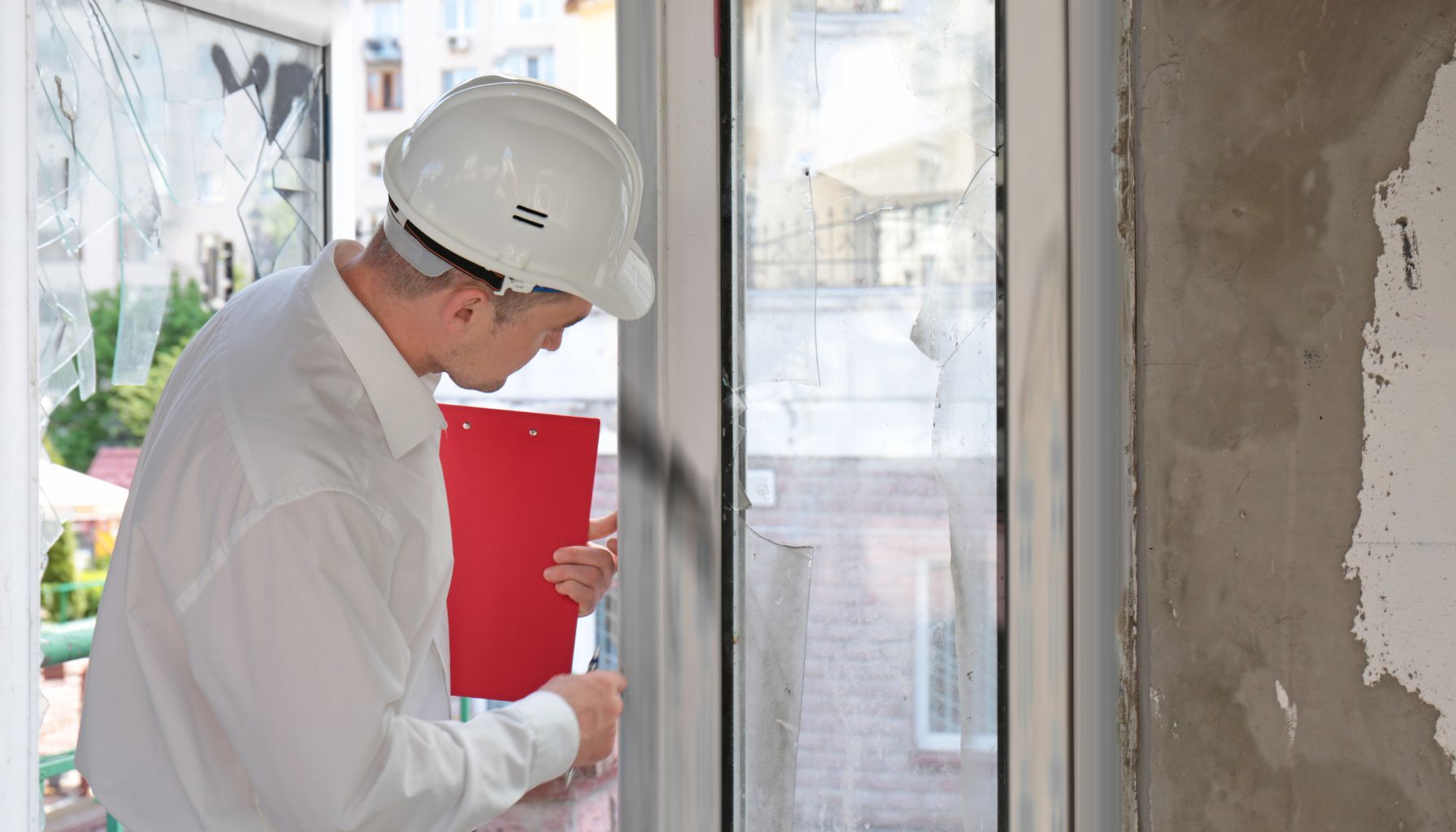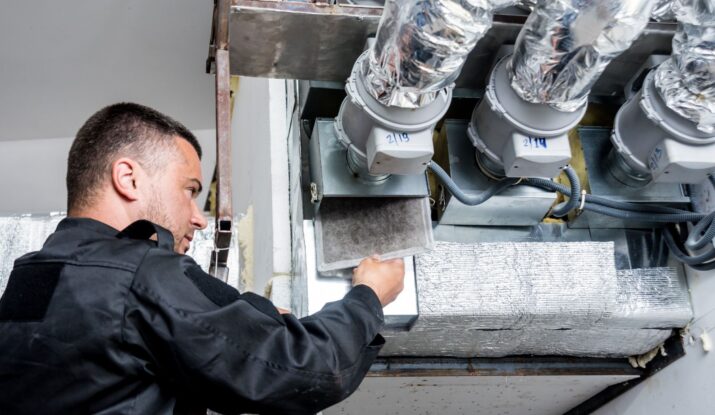Indoor air quality and mold damage – how they relate
Mold damage can have a significant impact on the quality of indoor air, posing risks to your health and well-being.
From causing respiratory problems to triggering allergies, mold spores released into the air can exacerbate existing conditions or even lead to new ones.
In this article, we will explore the various ways in which mold damage affects indoor air quality and what steps you can take to minimize its harmful effects. So, if you’ve ever wondered about the link between mold and the air you breathe, read on to discover the importance of addressing mold damage and safeguarding your indoor environment.
Understanding Mold
What is mold?
Mold is a type of fungi that commonly thrives in moist and humid environments. It is composed of tiny organisms called spores, which are invisible to the naked eye. Mold spores are present in the air both indoors and outdoors. While mold plays an essential role in nature, breaking down dead organic material, it can become a problem when it grows indoors.
Types of indoor mold
There are various types of mold that can grow indoors, but some of the most common ones include Aspergillus, Cladosporium, Penicillium, and Stachybotrys. Each type has its unique characteristics and can pose different health risks. It is worth noting that some molds produce mycotoxins, which can have detrimental effects on both human health and indoor air quality.
Conditions that favor mold growth
Mold requires certain conditions to grow and thrive. These conditions typically include a moisture source, such as water leaks or high humidity levels, organic materials like wood or paper for it to feed on, and a suitable temperature range. Mold tends to flourish in areas with moisture issues, such as bathrooms, basements, or areas affected by water damage. Understanding these conditions can help prevent and address mold growth effectively.
Mold in Indoor Environments
Common sources of indoor mold
There are several sources from which mold can enter indoor environments. These include water leaks from pipes or roofs, flooding, condensation, damp basements or crawl spaces, and even the introduction of mold-contaminated materials. Poor ventilation, high humidity levels, and lack of sunlight in certain areas can also contribute to mold growth.

Signs of mold presence indoors
Identifying the presence of mold indoors is crucial for maintaining a healthy indoor environment. Common signs of mold include a musty or earthy odor in certain areas, visible mold growth on surfaces such as walls, ceilings, or furniture, and the presence of water stains or discoloration. If you or others in your household are experiencing unexplained allergic reactions or respiratory symptoms, mold may be a possible culprit.
Effects of Mold on Indoor Air Quality
Release of mold spores
Mold spores are microscopic particles that are released into the air by mold colonies. When disturbed, these spores become airborne and can easily be inhaled. While not all mold spores are harmful, some can cause adverse health effects, especially when present in high concentrations. The release of mold spores into the air can significantly contribute to poor indoor air quality.
Production of mycotoxins
Certain types of mold, such as Stachybotrys, can produce mycotoxins. These are toxic substances released by mold that can have detrimental effects on both human health and indoor air quality. Inhalation of mycotoxins can lead to various symptoms, including respiratory issues, allergic reactions, and even neurological problems.
Mold odor contribution to indoor air pollution
The distinct musty odor associated with mold growth can not only be unpleasant but also indicates the presence of mold. When mold colonies grow, they release volatile organic compounds (VOCs) that contribute to indoor air pollution. These VOCs can have both short-term and long-term health effects, including respiratory irritation and cognitive impairments.
Mold Spores and Airborne Particulate Matter
Nature of mold spores as microscopic particles
Mold spores are incredibly tiny, ranging in size from 1 to 100 microns. Due to their microscopic nature, they can be easily inhaled and may penetrate deep into the respiratory system. Their small size makes it difficult for traditional air filters to capture them effectively, contributing to their dispersal and potential impact on indoor air quality.
Ways in which mold spores disperse in air
Mold spores can disperse in the air through various means, such as air currents, HVAC systems, and simply human activity. When mold colonies are disturbed or undergo changes in environmental conditions, they release spores into the surrounding air. These spores can travel throughout the indoor environment, potentially leading to widespread contamination if not addressed promptly.
Impact on indoor air particulate concentration
The presence of mold spores in indoor air can significantly contribute to the overall particulate matter concentration. When mold spores are inhaled, they can trigger respiratory symptoms and allergic reactions in susceptible individuals. Additionally, mold spores can settle on surfaces, leading to further contamination of the indoor environment. Controlling mold growth and minimizing the presence of mold spores is crucial for maintaining good indoor air quality.
Mycotoxins and Indoor Air Quality
What are mycotoxins?
Mycotoxins are toxic compounds produced by certain molds. While not all molds produce mycotoxins, those that do can pose significant health risks. Common indoor molds that can produce mycotoxins include Stachybotrys, Aspergillus, and Penicillium. Mycotoxins can persist in indoor environments even after the mold itself has been removed, potentially leading to ongoing health concerns.
How do mycotoxins get into the air?
Mycotoxins can enter the air through various pathways. When mold colonies produce mycotoxins, these compounds can become aerosolized and released into the surrounding environment. Once in the air, mycotoxins can be inhaled or settle on surfaces, leading to potential exposure and contamination.
Toxicology of common indoor mycotoxins
Different mycotoxins can have varying toxicological effects on human health. For example, Stachybotrys mycotoxins, also known as “black mold,” can affect the respiratory system and potentially lead to severe health issues. Other mycotoxins, such as those produced by Aspergillus and Penicillium, can also cause allergic reactions, respiratory problems, and even neurological symptoms. The toxicological impact of mycotoxins reinforces the importance of preventing and addressing indoor mold growth.
Respiratory Health Effects of Mold
Allergic reactions induced by mold spores
Mold spores can trigger allergic reactions in individuals sensitized to mold. Common allergic symptoms include sneezing, coughing, itchy eyes, throat irritation, and nasal congestion. Those with existing allergies or asthma are particularly susceptible to mold-induced allergic reactions. Identifying and controlling mold exposure is essential for managing respiratory health, especially for individuals prone to allergies.
Asthma and mold exposure
For individuals with asthma, exposure to mold can exacerbate symptoms and potentially lead to asthma attacks. Mold spores and the allergens they contain can trigger airway inflammation and provoke respiratory distress. It is crucial for individuals with asthma to minimize mold exposure and maintain a clean indoor environment to prevent respiratory complications.

Other respiratory conditions associated with mold
Besides allergic reactions and asthma, mold exposure has been linked to other respiratory conditions. Prolonged exposure to mold can result in the development of respiratory infections, bronchitis, and even pneumonia, especially in individuals with compromised immune systems. Additionally, mold exposure may contribute to the onset or worsening of chronic obstructive pulmonary disease (COPD). Taking appropriate measures to address mold growth can help reduce the risk of developing these respiratory conditions.
Neurological Impact of Mold Exposure
Cognitive effects of mold exposure
Recent research suggests that mold exposure may have cognitive effects on individuals. Some studies have indicated that prolonged exposure to mold can result in memory problems, difficulty concentrating, and impaired cognitive function. The exact mechanisms through which mold affects the brain are not yet fully understood, but it emphasizes the need to address mold growth promptly to protect neurological health.
Mood disorders related to mold exposure
There is evidence to suggest that mold exposure may contribute to mood disorders, such as depression and anxiety. Some individuals exposed to mold have reported experiencing symptoms like mood swings, irritability, and increased stress levels. While the precise relationship between mold exposure and mood disorders requires further investigation, creating a mold-free environment can contribute to a healthier mental state.
Chronic neurological conditions and mold
Certain chronic neurological conditions, such as multiple sclerosis (MS), have been associated with mold exposure. While the exact link is complex and still being studied, mold exposure has been suggested as a potential environmental trigger for the development or exacerbation of MS symptoms. As researchers continue to uncover the relationship between mold and neurological conditions, it becomes increasingly important to prioritize mold prevention and removal.
Reducing Mold Impact on Indoor Air Quality
Effective ventilation strategies
Proper ventilation is crucial for reducing moisture levels and preventing mold growth. Ensure that your home has good airflow by using exhaust fans in bathrooms and kitchens, opening windows when possible, and promoting air circulation throughout the house. Adequate ventilation helps control humidity levels and prevents the buildup of moisture that can foster mold growth.
Maintaining optimal humidity levels
Maintaining optimal humidity levels is essential for preventing mold growth. The Environmental Protection Agency (EPA) recommends keeping indoor humidity between 30% and 50%. Use dehumidifiers in moisture-prone areas such as basements and crawl spaces, and address any water leaks or plumbing issues promptly. Monitoring and controlling humidity levels is key to minimizing the conditions that favor mold growth.

Regular cleaning and maintenance
Regular cleaning and maintenance practices are vital for mold prevention. Keep your home clean and dry, paying attention to areas prone to moisture buildup, such as bathrooms and kitchens. Regularly inspect and repair any water leaks or sources of moisture. Additionally, clean and dry any water-damaged materials or items promptly to prevent mold growth.
Mold Detection and Removal Strategies
Methods of mold detection
Detecting mold in your indoor environment is crucial for timely remediation. Some common methods of mold detection include visual inspections, mold testing kits, and professional mold assessments. Visual inspections can help identify visible signs of mold growth, while mold testing kits can provide information about the types and concentrations of mold spores present. When in doubt or dealing with extensive mold growth, consulting a professional mold assessor is recommended.
Professional mold abatement services
For extensive or persistent mold problems, consulting a professional mold abatement service is often the most effective solution. Certified professionals can assess the extent of mold growth, identify the underlying causes, and safely remove the mold, while also addressing any moisture issues. Professional mold abatement services have the expertise and equipment necessary for safe and thorough mold removal.
Do-it-yourself mold removal techniques
Minor mold problems can sometimes be addressed with do-it-yourself techniques, but caution must be exercised. It is important to wear protective equipment, such as gloves and masks, to minimize exposure to mold spores. Small areas of mold growth can be cleaned with a mixture of water and detergent, or specialized mold cleaners. However, it is crucial to thoroughly dry the affected area and address any underlying moisture issues to prevent regrowth.
Preventing Future Mold Growth
Proper insulation and building maintenance
Proper insulation and building maintenance are key factors in preventing future mold growth. Ensure that your home has sufficient insulation and seals to prevent condensation and moisture buildup. Regularly inspect your roof, gutters, and plumbing systems for any leaks or issues that can contribute to moisture problems. Proper building maintenance helps create a mold-resistant environment.

Benefits of dehumidifiers and air purifiers
Using dehumidifiers and air purifiers can significantly aid in preventing mold growth and improving indoor air quality. Dehumidifiers help maintain optimal humidity levels, particularly in areas prone to excess moisture. Air purifiers with HEPA filters can effectively capture airborne mold spores and other particulate matter, improving overall indoor air quality. These devices are especially beneficial for individuals with allergies or respiratory conditions.
Importance of ongoing mold vigilance
Maintaining ongoing mold vigilance is vital for preventing future mold growth and maintaining good indoor air quality. Regularly inspect your home for any signs of mold, such as musty odors or visible growth. Address any moisture issues promptly and take necessary preventive measures to create a mold-resistant environment. By remaining vigilant, you can effectively protect your home and your health from the damaging effects of mold.
In conclusion, understanding mold and its impact on indoor air quality is crucial for creating a healthy living environment. From recognizing the types and sources of indoor mold to addressing its detrimental effects on respiratory and neurological health, taking proactive measures to prevent and remove mold is essential. By implementing effective ventilation strategies, maintaining optimal humidity levels, and practicing regular cleaning and maintenance, you can reduce the risk of mold growth and ensure a clean and mold-free indoor environment. Remember, ongoing mold vigilance is key to protecting your indoor air quality and promoting overall wellness.
Contact PureOne Services Now
Disclaimer: All PureOne Services locations do not hold all of these listed certifications.



